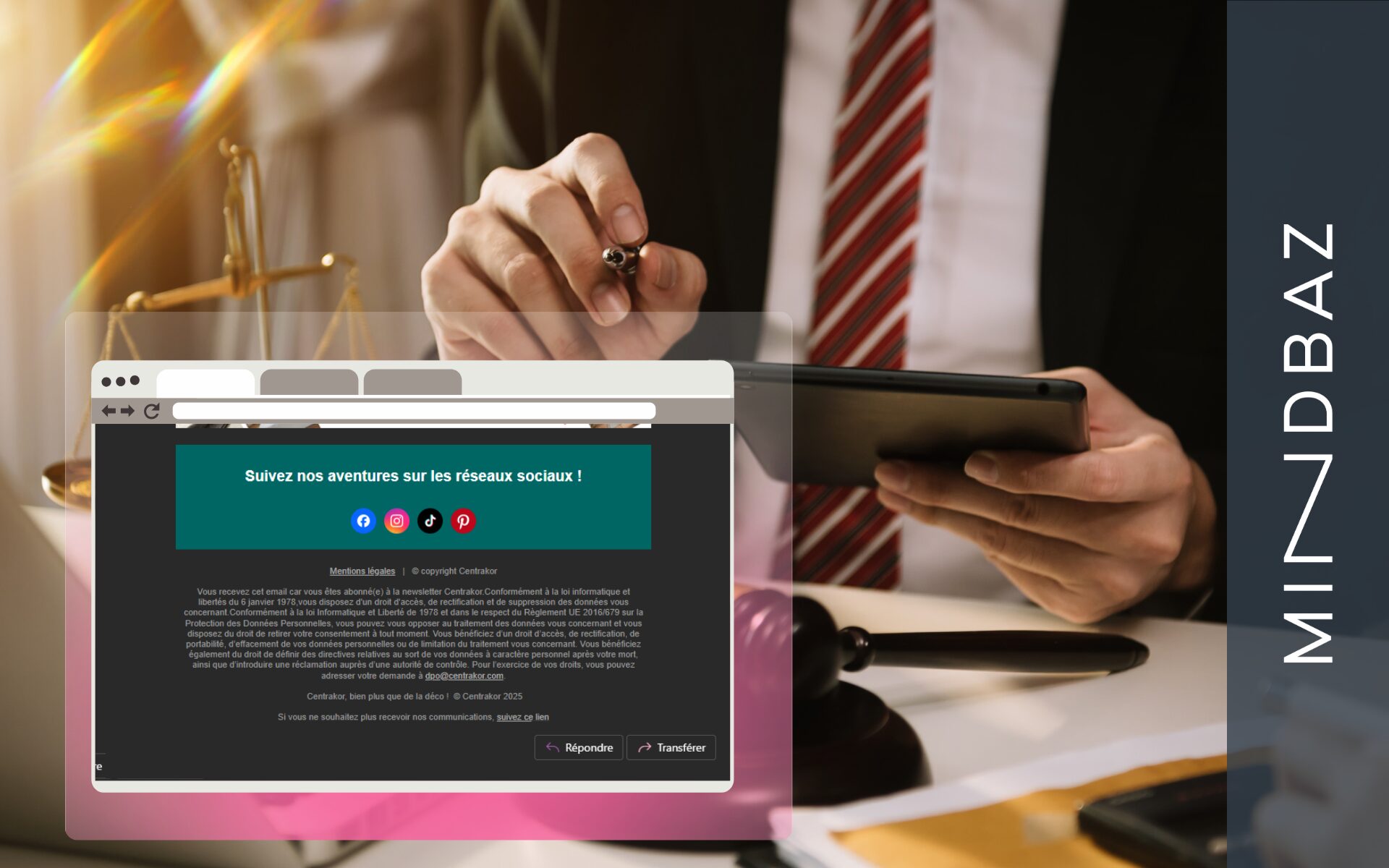The email footer is an essential element of any electronic communication. However, it is often overlooked despite playing a key role in email compliance and marketing optimization. What legal obligations must be met? How can you optimize it to improve engagement while ensuring data protection? Let's break down the best practices for an effective footer that complies with email regulations.
 Summary
Summary- Why the email footer is important
- The legal obligations of an email footer
- Best practices for an effective footer
- Examples and customization tips
- In summary: Email footer - legislation, tips, and explanation
Why the email footer is important
The email footer is not just a decorative element. It ensures transparency and email compliance by providing essential information to recipients. It also plays a crucial role in the sender's credibility and personal data protection.
The legal obligations of an email footer
Email legislation imposes several mandatory elements that must be included in a footer to comply with email marketing rules. These requirements aim to ensure transparency and protect recipients from abuse.
- Sender's identity: Company name or business name.
- Email legal notices: Postal address and contact details.
- Privacy policy: Link to the personal data processing policy.
- Email consent: Mention of the legal basis for sending (opt-in).
- Unsubscribe link: Mandatory under GDPR email regulations.
Best practices for an effective footer
A well-designed email footer must be both compliant and optimized to enhance the user experience. Here are some recommendations to achieve this balance.
- Use a clean and readable design.
- Include clear and accessible information.
- Avoid overly long text blocks.
- Add clickable links to the privacy policy and terms and conditions.
- Consider email footer personalization to enhance impact.
Examples and customization tips
Here is a comparative table of different types of footers and their impact on deliverability and compliance.
| Footer Type | Advantages | Disadvantages |
|---|---|---|
| Minimalist | Optimal readability, guaranteed email compliance | Lacks branding |
| Detailed footer | Complete information, increased credibility | May appear too dense |
| Interactive footer | Enhanced engagement, better personalization | Risk of information overload |
No time to read? Summary here
In summary: Email footer - legislation, tips, and explanation
- The email footer is essential for ensuring transparency, email compliance, and strengthening credibility.
- It must contain mandatory information: sender's identity, email legal notices, privacy policy, and unsubscribe link.
- GDPR email regulations impose strict rules to ensure data protection and recipient consent.
- Best email practices recommend a clear design, accessible information, and clickable links.
- Different types of footers exist: minimalist (readability), detailed (credibility), interactive (engagement).
- Optimizing your footer ensures compliance with email regulations while improving user experience.
